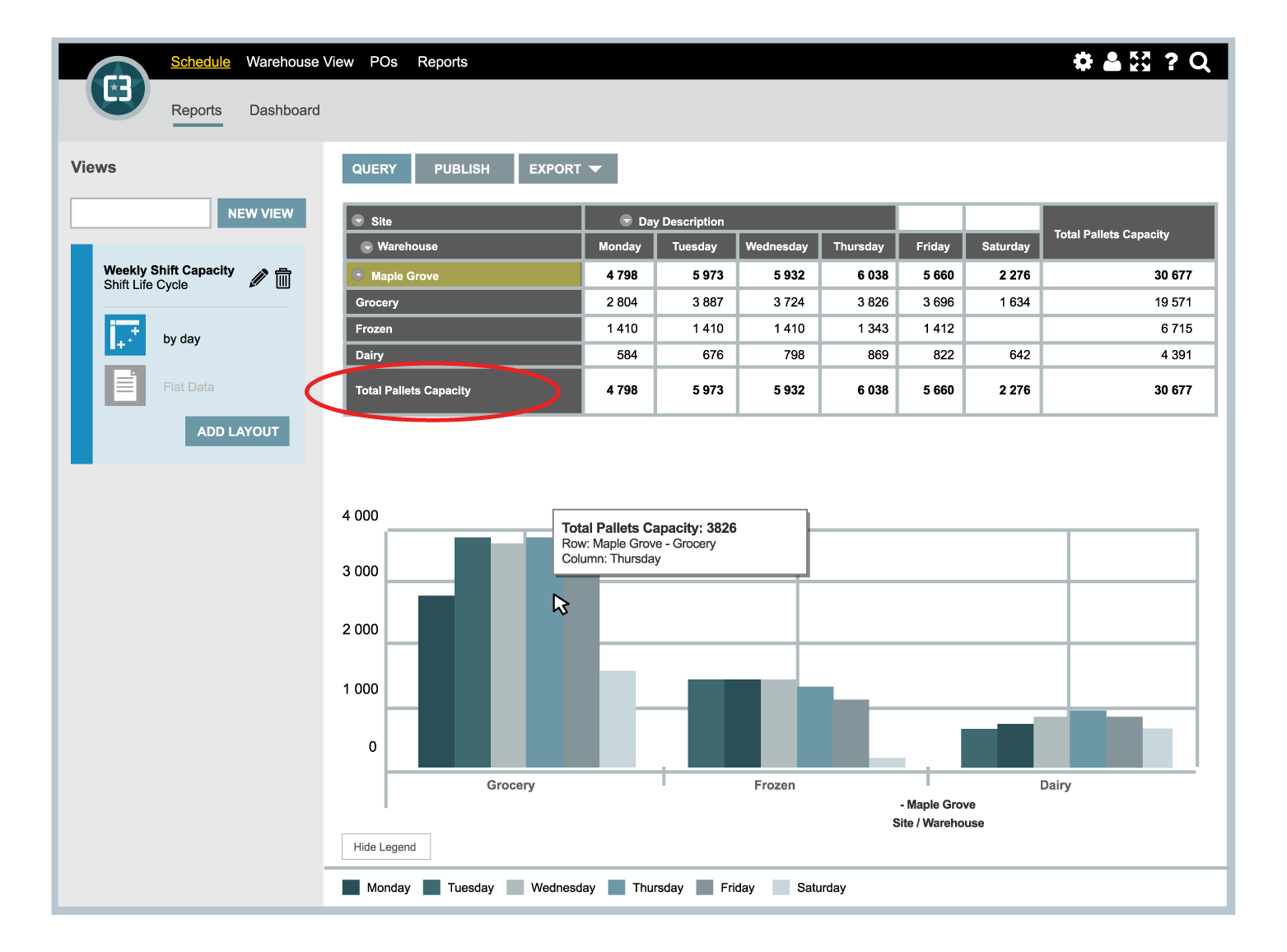The Ideal Christmas Present for the Warehouse Manager

The ideal present is always something that the person really wants and has difficulty obtaining on their own. Sometimes you need to look outside the box and study the less obvious ideas. On the eve of this holiday season, I wanted to bring to light what managers regularly crave for: real time data, either in the form of reports or dashboards.
Summary
-
Identifying the POs by product type and promotional code helps the store receiving team to plan the required labor and to establish their priorities.
-
A warehouse receiving 10 loads per day gets caught paying overtime labor even though the receiving team was twiddling their thumbs during the day.
-
A manager is unable to plan labor based on the WMS’s report on load count because it’s based on EDD and not actual appointment date.
In my first example, providing the store receiving team visibility on the type of goods and related quantities allows them to plan the workforce required in the evening shift. That, in itself, is pretty obvious. This company has taken it a step further by tagging the POs that are associated with promotions. Why? The receiving staff now has visibility on which loads are specifically tied to promotions. Not only do they have the right staff, they know to prioritize the work with in the shift.
The second example is about a warehouse that is looking at adopting a dock scheduling system. As you can imagine, 10 loads per day isn’t what will tax the scheduler with phone calls and emails. The biggest issue is to apply some constraints to their 3 doors and also prevent certain types of shipments from being delivered near the end of a shift.
As everyone knows, the number of doors at a building is not necessarily a reflection on the quantity of receivers on hand, nor the equipment availability (if required). Due to the uneven flow of trucks arriving at their site, at certain hours, their receivers are idle and at others times carriers are waiting to get unloaded.
The worst situation is receiving a complex load near the end of a shift. Especially in distribution, receiving a load doesn’t stop at unloading the truck – everything needs to be counted and received in their WMS and put away in order to maintain their service levels - thus amplifying the overtime issue.
The solution is to be able to apply constraints to the schedule (quantities and load types) in order to balance the loads throughout the day. Ensuring that the plan is respected requires real time reports and dashboards.
Finally, it is relatively common that information systems provide the business visibility on the POs that are expected to be delivered or picked-up at a facility. The problem occurs when this information is only based on the expected delivery date (EDD) rather than the actual booking date.
Depending on the type of business, the EDD may not necessarily be equal to the appointment date. Thus it serves no purpose to the DC manager to have these reports if they’re not based on the appointment date counts. Obtaining a 24 to 72 hours warning on potential volume gluts, I think everyone will agree, is critical to maintain a constant and efficient flow of goods without running into space, equipment and labor issues.
So what’s the ideal present?
A sure way to make any manager happy is to provide the person with the data and reporting tools required to make quick and informed decisions. Unlike receiving Christmas presents, your receiving docks should not be a continuous string of surprises.
For more information on the value of reports and dashboards, read our whitepaper on the Underestimated Value of Dock Scheduling.
Happy Holidays!

